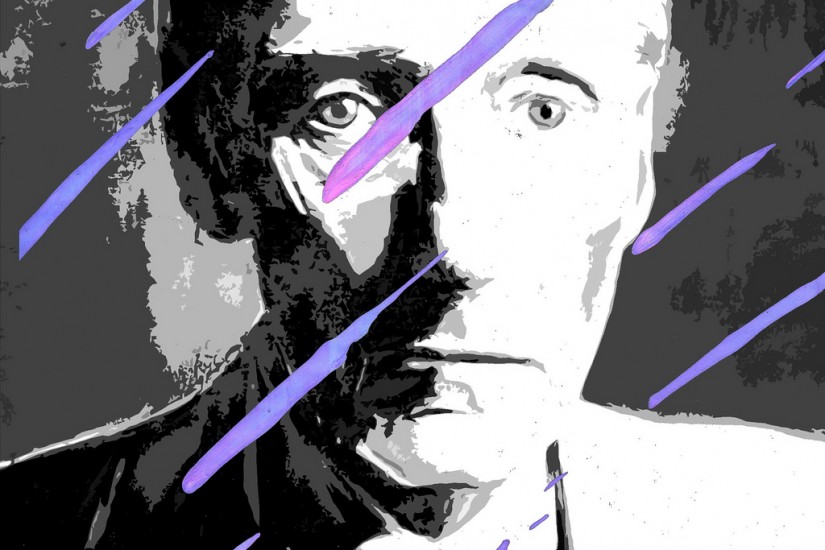Dylan arrived on the scene with a beat-up acoustic guitar and a voice that David Bowie later compared to “sand and glue” in his “Song For Bob Dylan” from Hunky Dory (1971). That track is both an echo and parody of an early Dylan number written for Woody Guthrie that appeared on his self-titled debut. Within a few short years, Dylan found himself at a creative crossroads. He was infuriated by those who wanted to place limits on him or force him into a mold. Burroughs’ lifestyle and intellectual product, all slashing wordplay and Billy the Kid attitude, looked like freedom. Dylan’s talent and ambition bred resentment within the scene that gave him his initial boost. More than a few of his fellow artists viewed Dylan with a combination of jealousy and skepticism. Traditionalists thought he was hopelessly self-absorbed; even his supporters fretted over his growing recognition beyond the cloister. Dylan was desperate for a new identity. Inspired by Burroughs, the young folkie set about cutting up and rearranging the character of “Bob Dylan” into exciting, confounding, and ever-changing forms.
Burroughs’ quicksilver abstractions opened up new creative possibilities for Dylan, who had only recently taken a more impressionistic approach to songwriting. “Hey, you dig something like cut-ups? I mean, like William Burroughs?” Dylan asked interviewer Paul J. Robbins in a conversation published in the Los Angeles Free Press in 1965. Burroughs had left Tangier that spring and returned to New York, where he hoped to get clean and benefit from what Ginsberg assured him was his emerging status in the counterculture. Ginsberg was already on friendly terms with Dylan, but not yet the groupie he’d become. “Tell him I’ve been reading him and that I believe every word he says,” Dylan told Ginsberg about Burroughs. But what wisdom could an aging, junkie author impart to a twenty-four-year-old on the verge of superstardom? Maybe he could teach Dylan how to disappear in plain sight. Help a wet-behind-the-ears agent learn what makes a good cover story. Give him tips on keeping it straight in his head. It was time to make introductions.
Burroughs and Dylan took their meeting at a small café in Manhattan’s East Village, the precise location of which has been lost to time and memory. “He struck me as someone who was obviously competent,” Burroughs later told Victor Bockris. “If his subject had been something that I knew absolutely nothing about, such as mathematics, I would have still received the same impression of competence. Dylan said he had a knack for writing lyrics and expected to make a lot of money.” Personally, Burroughs had little use for money beyond its utility in purchasing narcotics and avoiding hard labor. But he could easily spot élan, which Dylan had in spades. “He had a likable direct approach in conversation, at the same time cool, reserved,” Burroughs later recalled to Bockris. “He was very young, quite handsome in a sharp-featured way. He had on a black turtleneck sweater.” Although they only met once in person, Burroughs left a mark on the younger artist. According to critic R. B. Morris, “There’s no doubt that he was greatly influenced by Burroughs’ wild juxtaposing of images and scenes, as well as subject matter.” After encountering Burroughs, Dylan’s work became even more abstract, caustic, and surreal.
